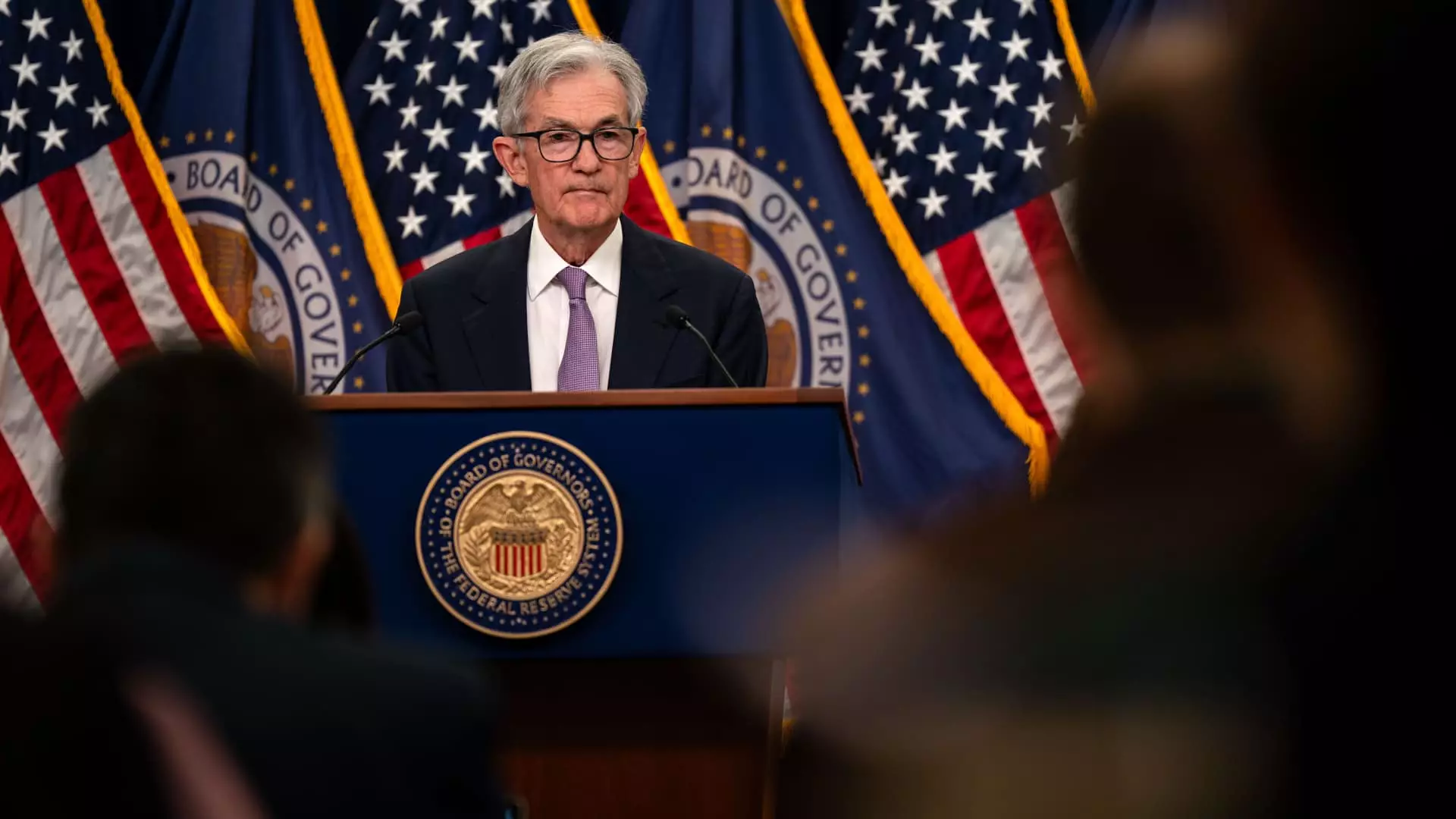As the U.S. economy stands on the precipice of change, the Federal Reserve’s recent decision-making reflects a complex landscape marked by uncertainty. The minutes from the December meeting revealed officials grappling with inflation concerns and the potential impacts stemming from the policies of then-President-elect Donald Trump. This article delves into the intricacies of the Fed’s stance, particularly its cautious approach to interest rate adjustments amid a landscape characterized by unresolved economic influences, such as trade and immigration policies.
Federal Reserve members have expressed increasing alarm regarding inflation rates that consistently surpass their target of 2%. With core inflation recorded at 2.4% in November and a stark 2.8% factoring in volatile food and energy prices, the Fed’s optimism appears tempered. Meeting summaries indicate that participants observed a shift in inflation risk, with a consensus suggesting that upward pressures are more likely than downward corrections. The Fed has been responsive, slashing its benchmark borrowing rate to a range of 4.25%-4.5%, but the anticipated pace of further cuts is notably slower.
The decision to ease rates reflects the reality that economic growth remains strong, with gross domestic product (GDP) expanding above trend through 2024. However, participants recognize that external factors, particularly those associated with the incoming administration’s policies, introduce a higher degree of unpredictability. The minutes explicitly connected recent inflation readings to speculation about upcoming changes in trade and immigration, indicating a direct correlation between policy and economic performance.
President-elect Trump’s administration is poised to initiate substantial shifts on various economic fronts, particularly trade. Trump’s inclination toward imposing punitive tariffs on key trade partners has incited fears of retaliatory actions that could disrupt established trade relationships and exacerbate inflation. The uncertainty surrounding these anticipated policies has prompted the Federal Open Market Committee (FOMC) to remain vigilant. Officials have pointedly referenced the need for caution, highlighting that the impact of proposed tariffs and deregulation efforts could significantly steer the economic landscape.
Moreover, the potential reprioritization of enforcement around immigration policies raises further questions. With indications of increased deportations and altered immigration flows, the economic ramifications could be profound, affecting labor markets and consumer spending power. The Fed’s minutes indicated that participants were acutely aware of these potential policy shifts, placing an increased emphasis on careful monitoring of evolving economic indicators.
The Fed’s approach to modifying monetary policy reflects a keen understanding of the evolving economic environment. While past easing measures have been enacted to stimulate growth, the FOMC now finds itself in a position to tread more carefully. As they observe the landscape, many participants noted that the policy rate is now nearly at its neutral level, resulting in an intricate balancing act.
The minutes from the meeting underscored that while there might be room for further rate decreases, the pace would depend significantly on forthcoming data and economic developments. This methodical pace is likened to navigating through a fog; Federal Reserve Chair Jerome Powell’s analogy succinctly encapsulates the underlying philosophy driving the Committee’s decision-making processes. Officials recognize that a “slow and steady” approach may be necessary to better evaluate how previous policy actions influence the economy.
Looking ahead, the FOMC’s forecasts suggest a tempered optimism regarding lowering the federal funds rate. With expectations of only two additional cuts anticipated by 2026, and possibly a few more in subsequent years, the Fed’s long-run goal seems to veer nimbly towards stability. Markets are already pricing in limited moves, illustrating a collective recognition that immediate drastic actions may not be warranted under current conditions.
The summary of individual expectations, known as the “dot plot,” demonstrates that the Fed is prepared to act based on unfolding data rather than follow a predetermined path. This flexibility highlights a strategic pivot that counters any rush to adjust rates preemptively amidst uncertainties—a virtue in economic stewardship.
The Federal Reserve’s recent meeting encapsulates a tapestry of decision-making woven with caution, adaptability, and foresight. With inflation hovering above target levels and a host of unpredictable elements brought forth by new administration policies, the Committee’s commitment to a gradual monetary easing clearly signifies their acknowledgment of a complex and fluid economy. As the Fed navigates the fog of uncertainty, its actions underscore the importance of measured responses that prioritize economic stability over hasty maneuvers. Looking forward, the balancing act between accommodating growth and containing inflation will undoubtedly shape the Fed’s narrative in the coming years, setting the stage for a pivotal chapter in U.S. economic history.

